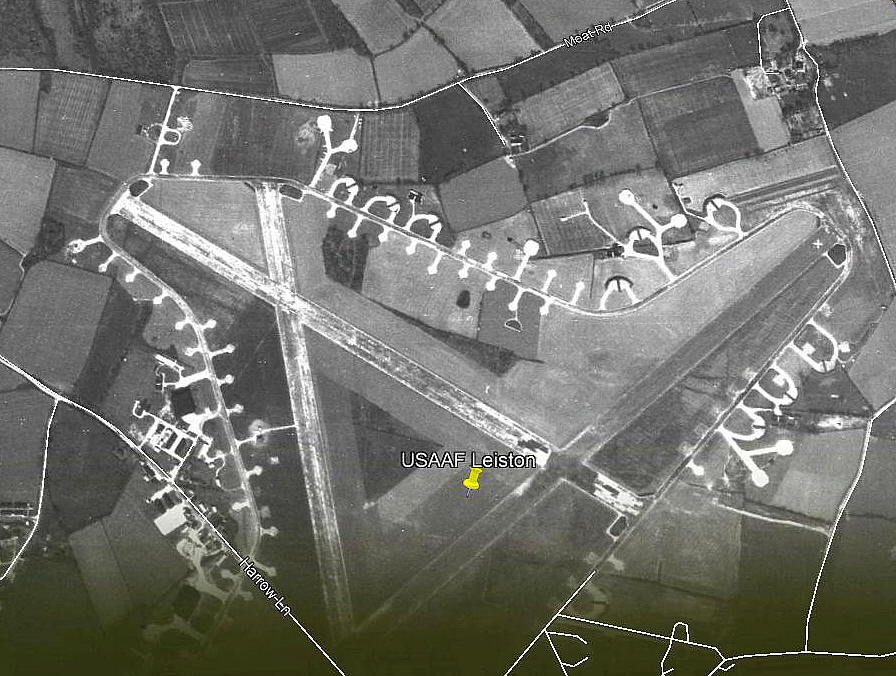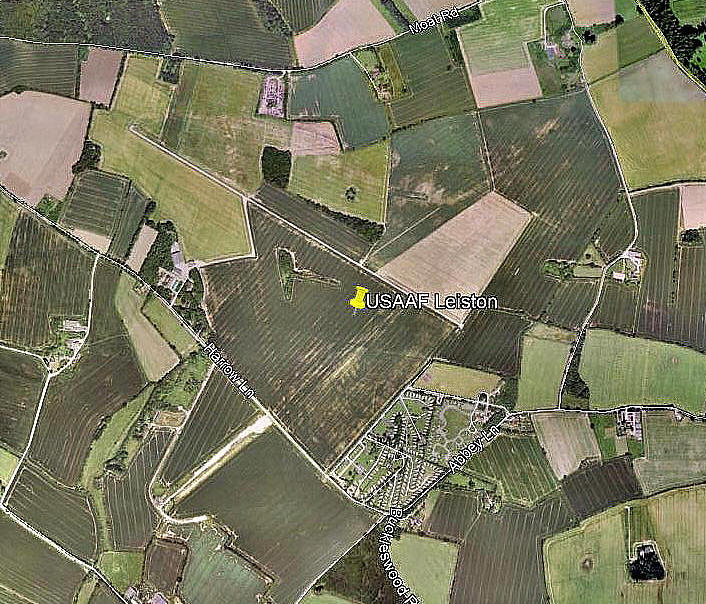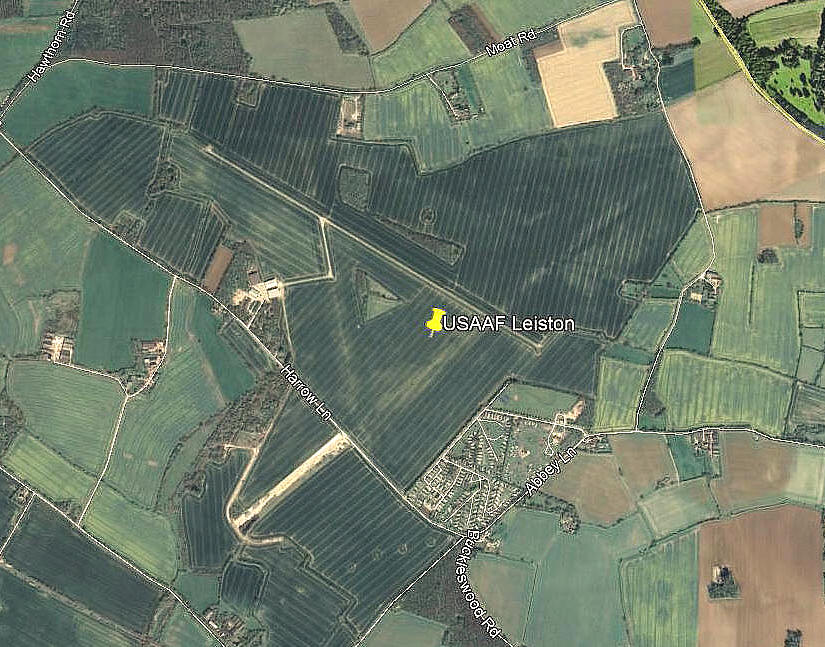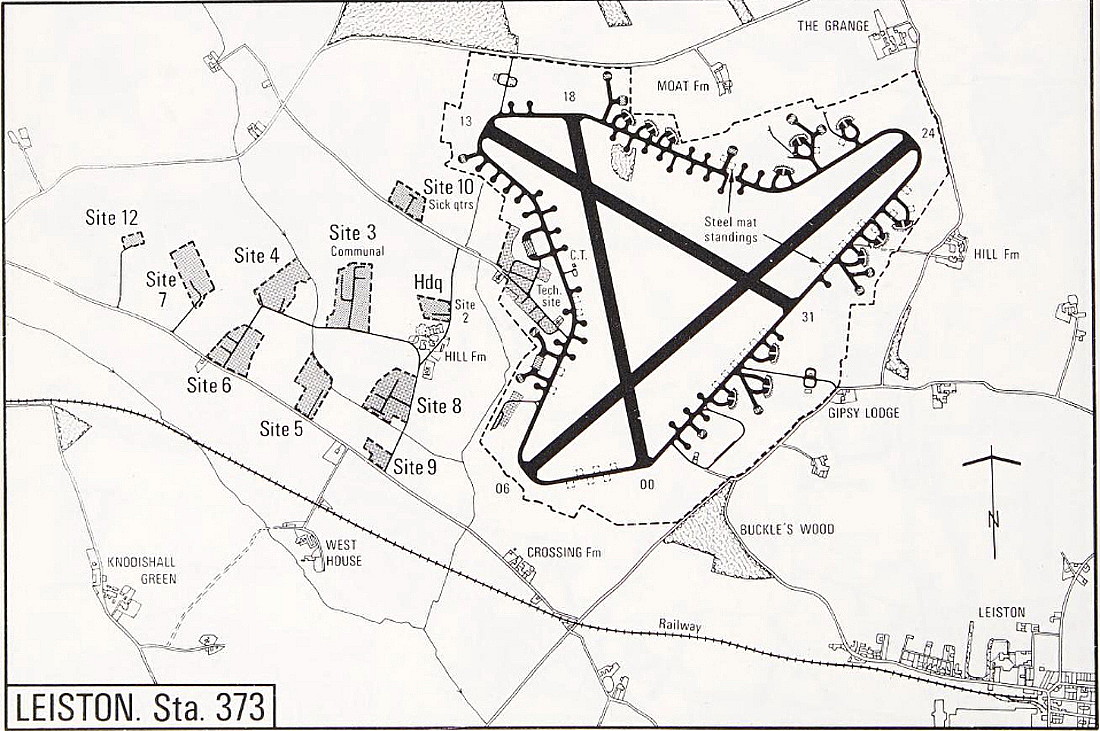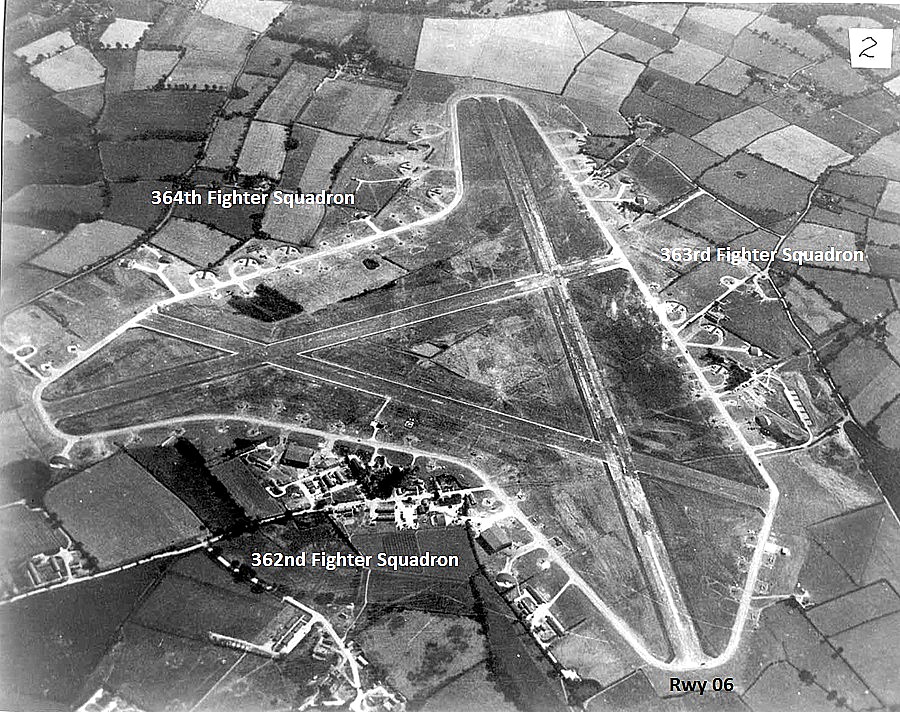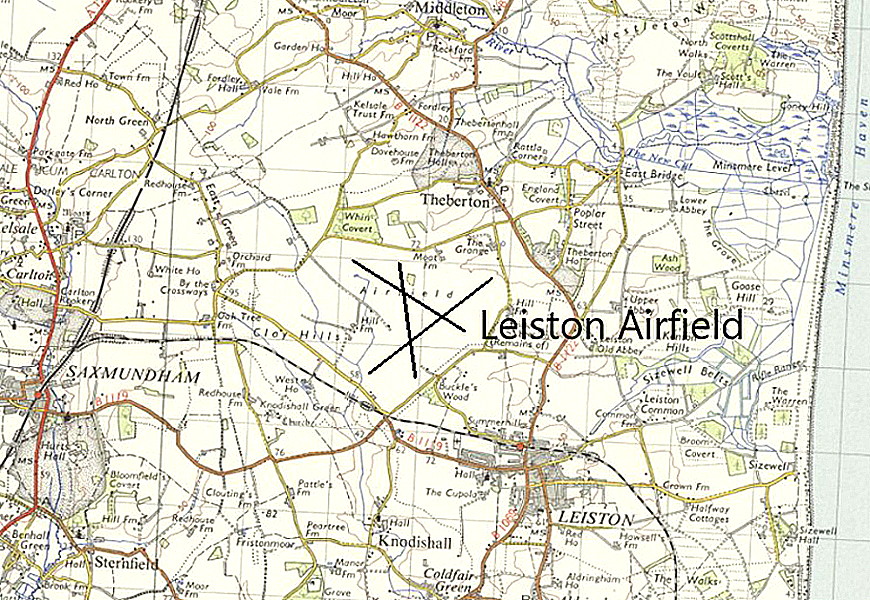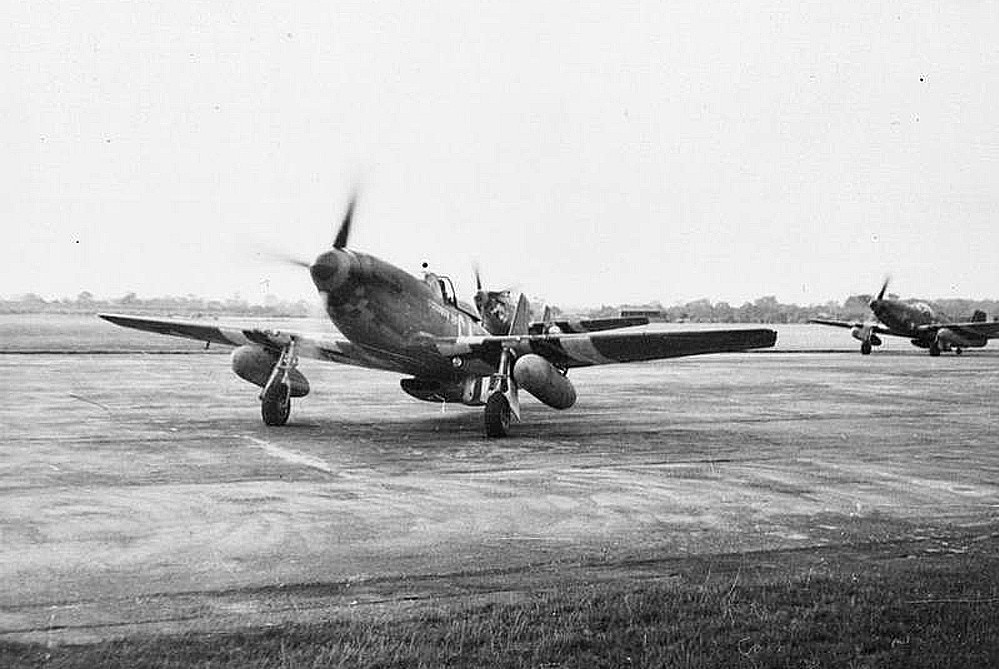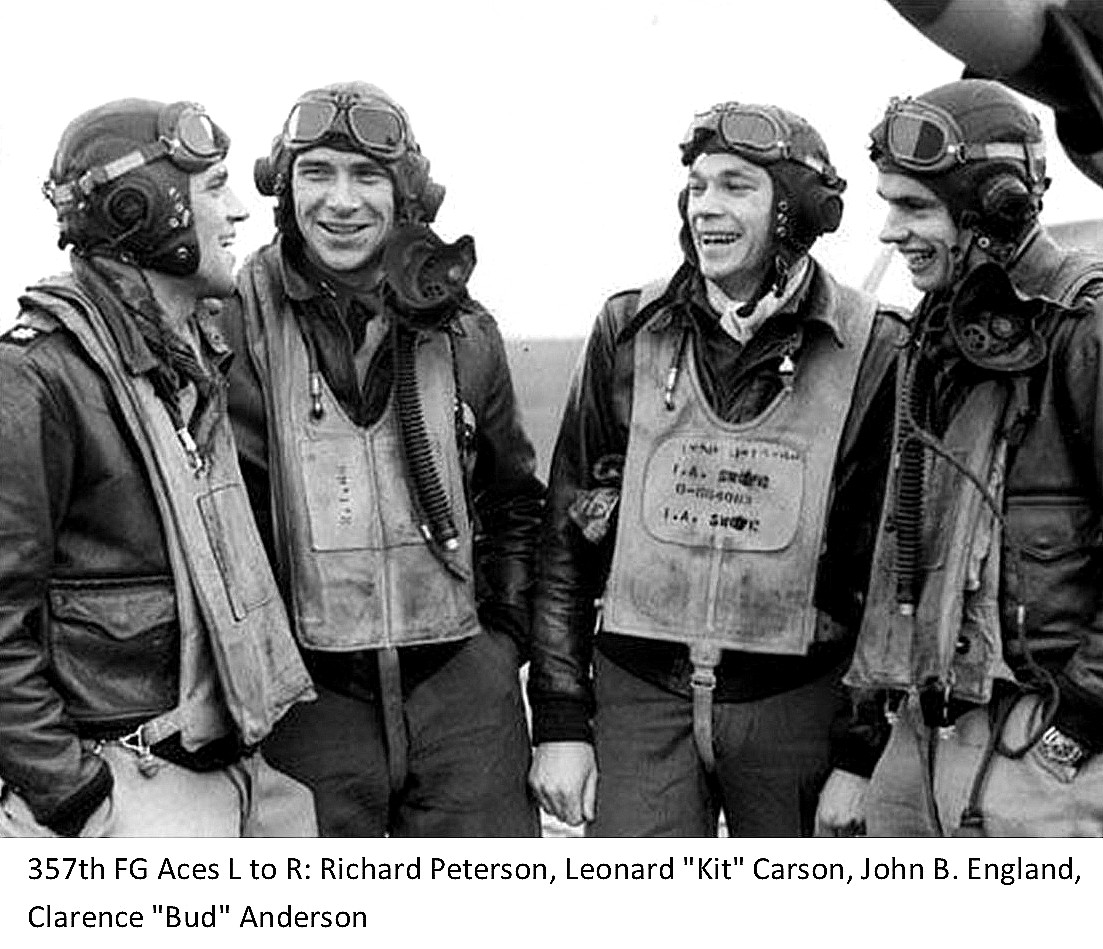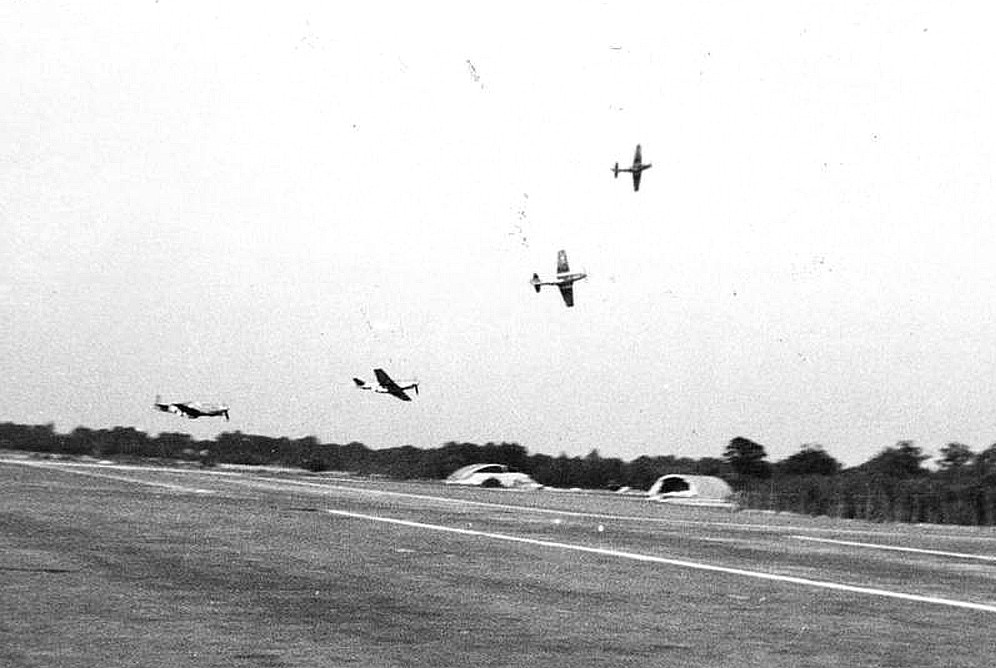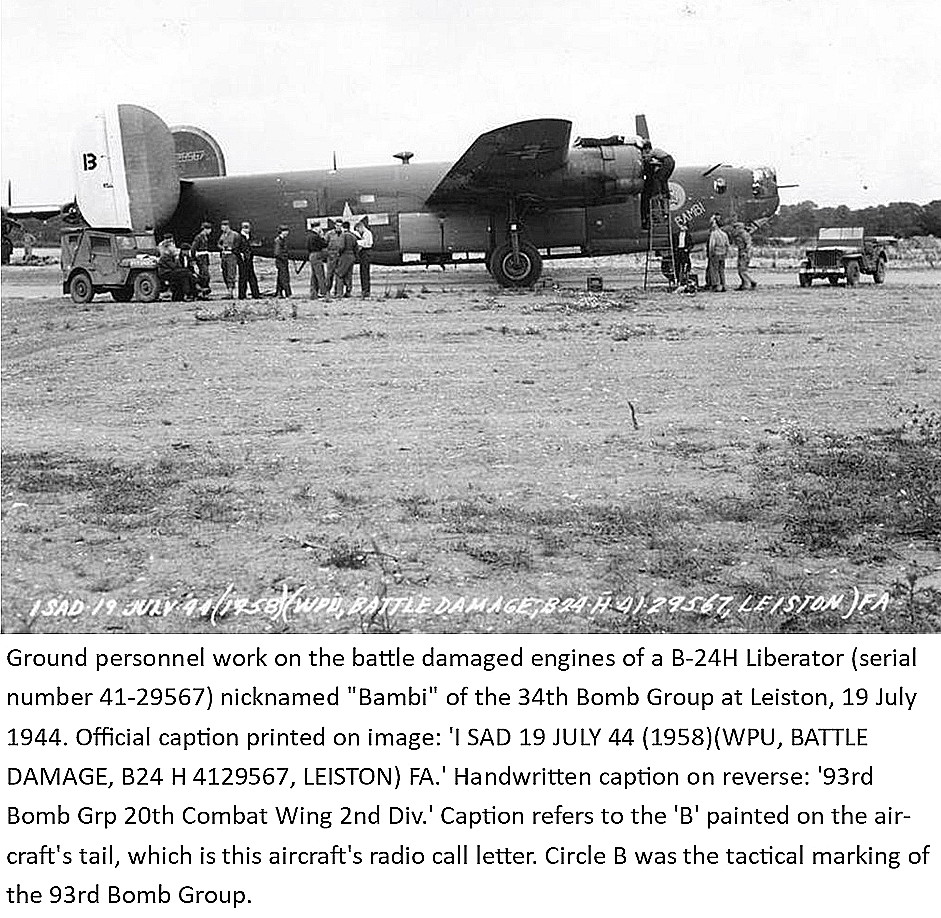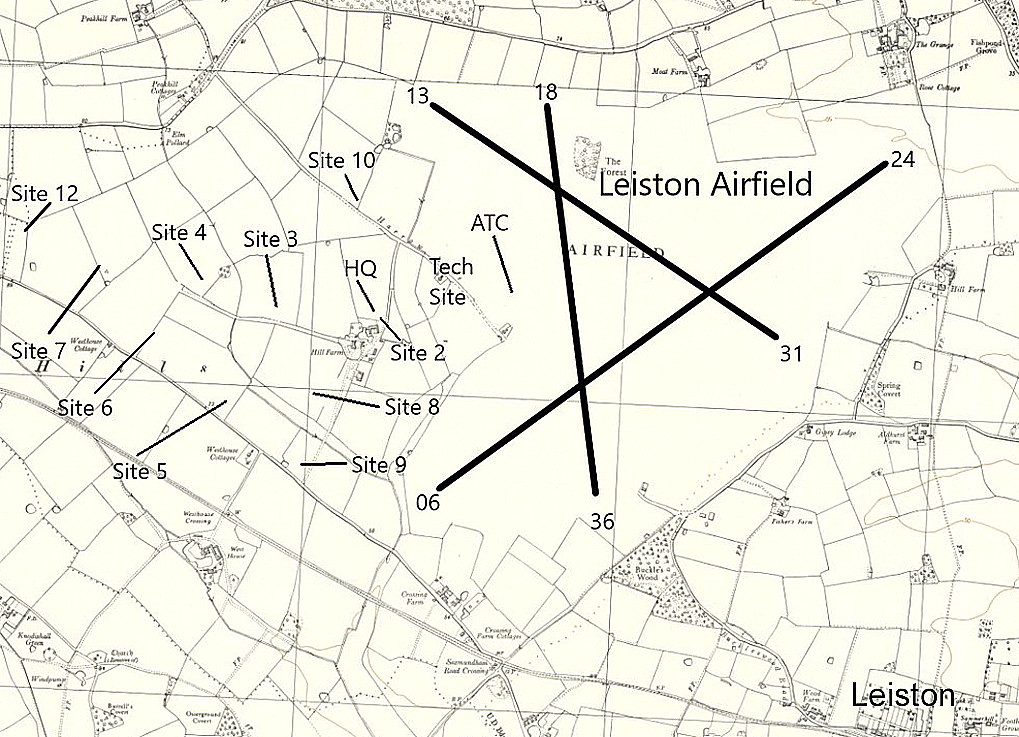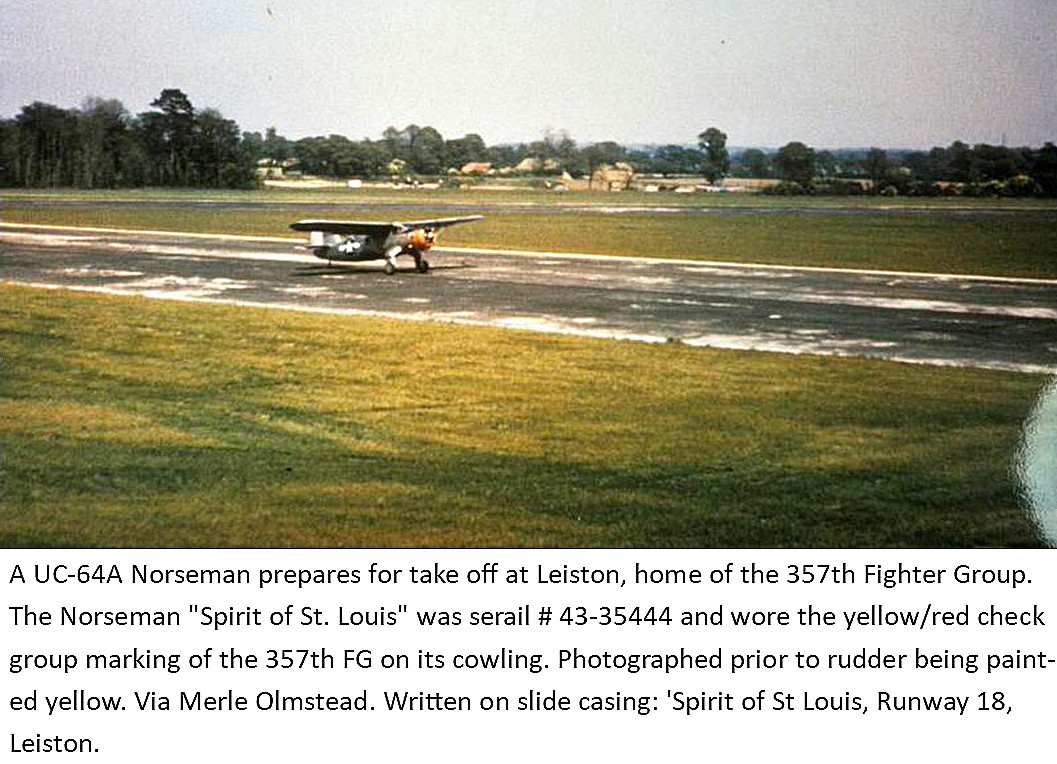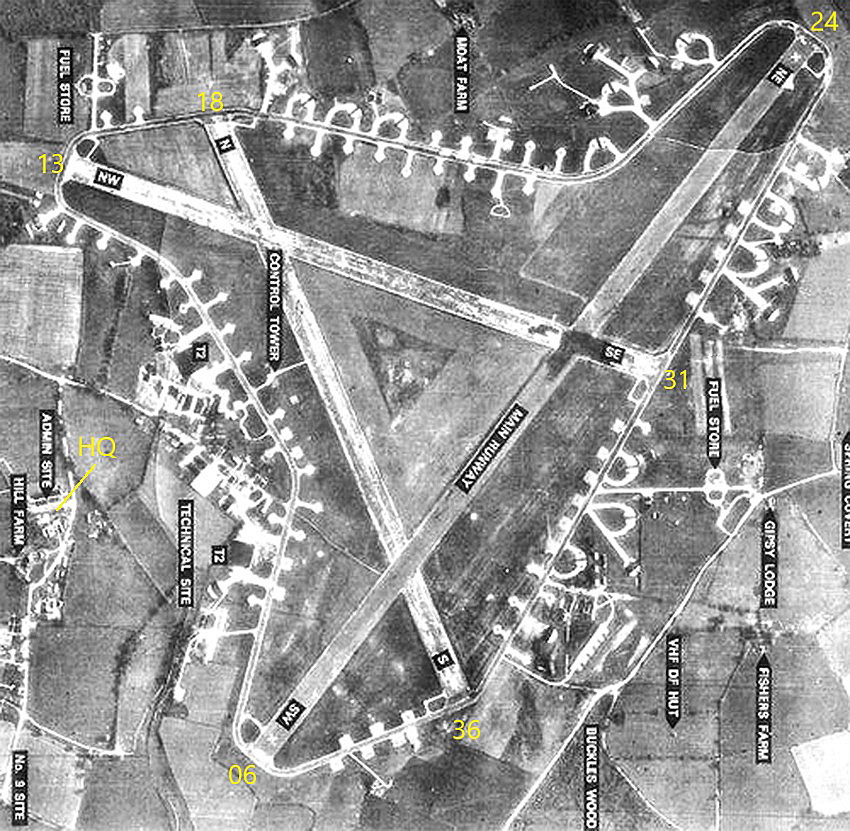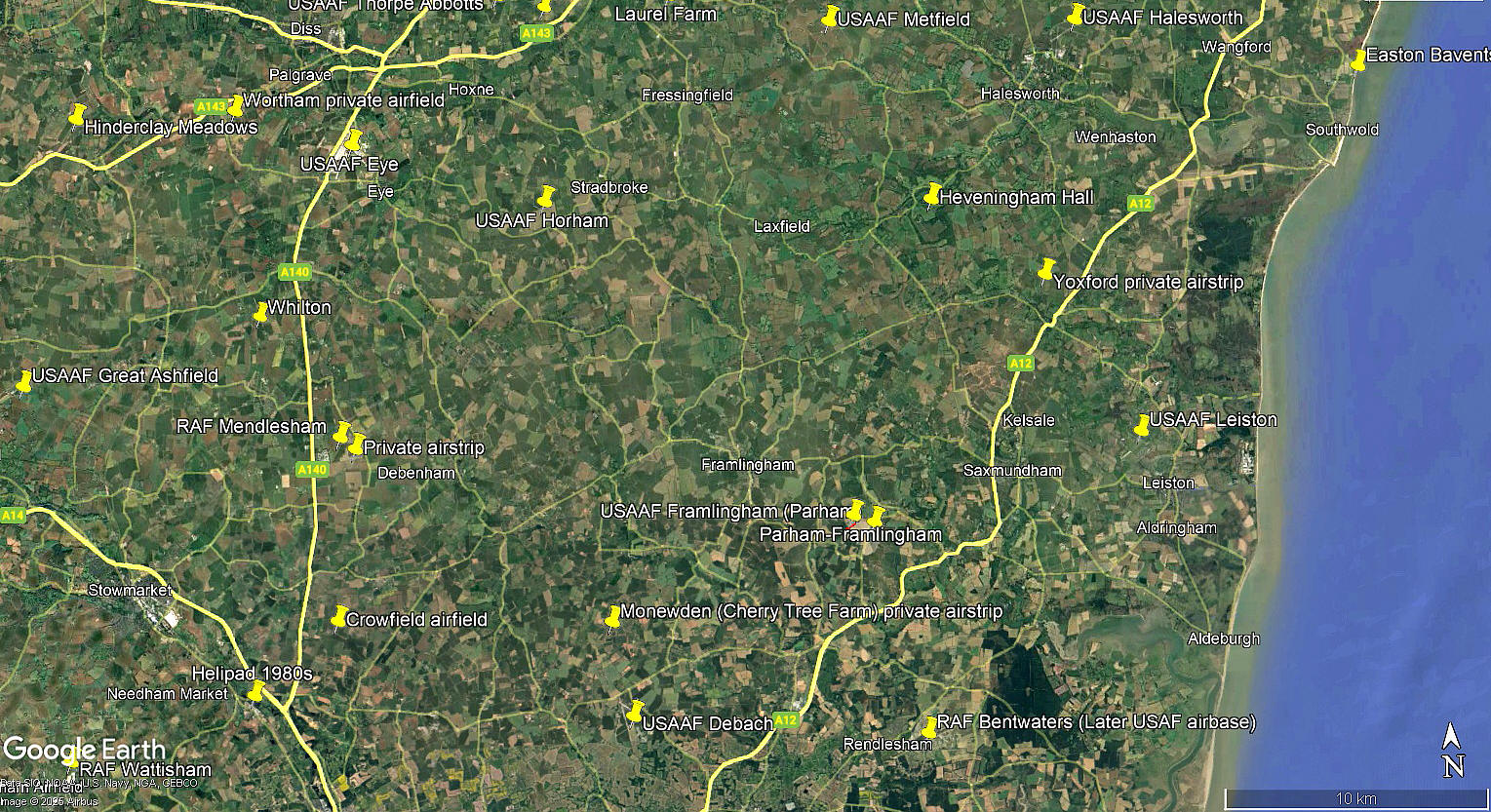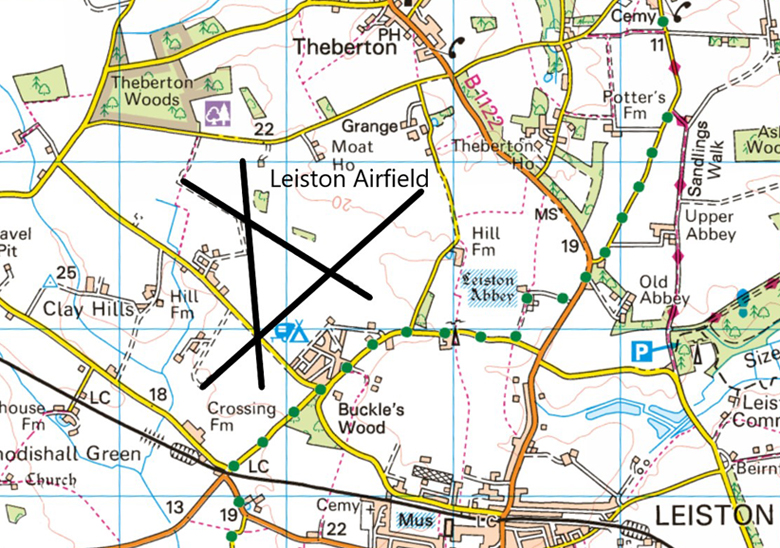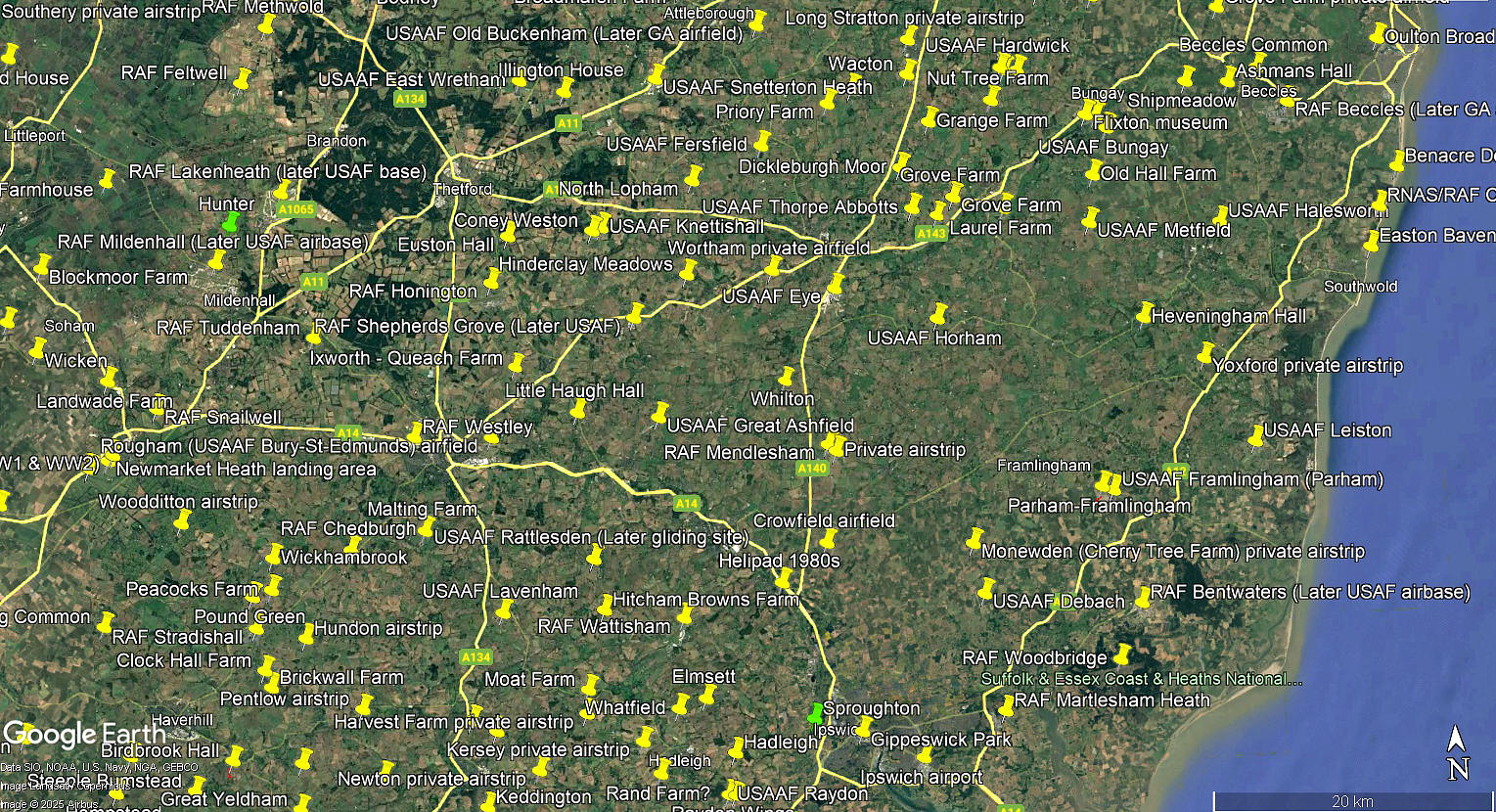Leiston
LEISTON: Military aerodrome (Also known as THEBERTON and SAXMUNDHAM)
Note: All three of these pictures were obtained from Google Earth ©
Military users: WW2: 8th USAAF
358th Fighter Group (Republic P-47 Thunderbolts)
66th Fighter Wing 357th Fighter Group
362, 363 & 367 Sqdns (North American P.51 Mustangs)
2nd Gunnery & Tow Target Flt (Vultee A.35B Vengeances)
Manufacturing: Post WW2: CFM
Location: 3nm E of Saxmundham
Period of operation: 1943 to 1953
Runways: WW2: 06/24 1829x46 hard 13/31 1280x46 hard
18/36 1280x46 hard
A MICHAEL T HOLDER GALLERY
As so often in this 'Guide', here once again we have to thank Mike Holder for taking the time and trouble to see what is available to illustrate this listing, plus providing the annotated maps and pictures.
Note: This first aerial vertical was obtained from Fly and Fight.
All three of these pictures are from the American Air Museum. Photo One shows P-51 Mustangs lining up for take-off, Photo Two is of some 357th Aces, and Photo Three shows Mustangs sweeping to break.
Photo Four is also from the American Air Museum, and I think of much interest. Being located so close to the coast several badly damaged USAAF bombers coming back from raids elected, quite understandably, to land here. What in particlular, having been involved for much of my life with road transport, are the logistics required to effect the repairs. Obviously the means to make a thorough engineering inspection of the damage is needed. Did the USAAF have suitable ladders and gantries spread around on fighter bases to cope? Or did they have to be trucked in?
Perhaps some might consider this to be a trivial matter in the greater scheme of things, and I suppose it is looking at the bigger picture. But, a heavy bomber was crucial piece of equipment and considerable efforts were made, if at all possible, to repair and restore badly damaged aircraft. Even when they didn't make it back to their base. So, imagine what was required for an off-base landing. All the exact parts needed, tooling and I suppose, quite often specialised tooling and other equipment needed. Lets face it, just one important item left behind in the exercise could mean serious delays in getting the aircraft repaired to be fit to fly back to its base.
Photo Four, also from the American Air Museum, shows a Norseman taking off. The second aerial vertical is from Wikipedia.
The local area and area views are both from my Google Earth © derived database. Please note that not by any means are all the flying sites listed in this 'Guide' pinned on this database.
NOTES: In WW2 the USAAF normally had four squadrons of bombers at each bomber base but only three squadrons of fighters at each fighter base. Why did this happen? The 358th Fighter Group arrived from GOXHILL having completed their training and after completing just nineteen missions in 1944 they moved to RAYDON as part of the 9th Air Force.
THE 357th
It is claimed the 357th were the first USAAF 8th Air Force Fighter Group to be equipped with the North American P-51 Mustang, (having converted at RAYDON), and ended the war as the second highest scoring group in the entire 8th Air Force! Ever better versions of the Mustang were employed, B, C, D and K variants and on average 50 aircraft were despatched for escort duties, sometimes up to 70 aircraft. In March 1944 this Group had the distinction of escorting the first USAAF bombing raid to Berlin.
It is probably not fully realised by most youngsters just what a formidable long range fighter the later types of Mustang were. For example, as part of Operation FRANTIC on the 6th August 1944 sixty-four Mustangs escorted ninety-seven B.17s to bomb the Focke-Wulf factory in Gdynia, Poland. The ‘force’ carried on to Piryatin in Russia to regroup and refuel - some seven and a half hours of utterly knackering flying! On the 8th August they attacked targets in Romania landing in Italy.
From a purely practical navigational point of view I find these accounts quite extraordinary - how did they find their destinations? Or, did the bombers also proceed to these destinations? In which case all they had to do was follow them. On the 10th August they escorted C-47s on a medical evacuation flight before leaving on the 12th to attack Toulouse before returning to LEISTON. This strikes me as being a quite exemplary feat, not least from the navigation involved even though little enemy opposition was encountered?
'CHUCK' YEAGER
It seems certainly worthwhile recording that flying in this Group was a certain young pilot, Lieut “Chuck” Yeager, who became an “ace” in one day on a mission to Bremen, (shooting down five aircraft), then shooting down a Me 262 shortly after. He was later to pilot the Bell X-1, (a design pioneered by Miles in the UK and “given” to the USAF), so the Americans could be the first to break the ‘Sound Barrier’.
A RED LETTER DAY
On the 14th January 1945 this was a “red letter” day for the 357th Group. Having been grounded for the previous seventeen days by bad weather they flew 56 Mustangs led by Col. Dregne to escort bombers to oil targets and encountered a mixed force of around 130 Bf 109s and FW 190s. During a fierce air battle over the Brunswick area 56 enemy fighters were claimed, (presumably later authenticated?), and this became the highest score ever recorded by an Eighth Air Force fighter group.
After fifteen months of 318 missions, 592 claims of enemy aircraft destroyed were made, plus 118 damaged in aerial combat. Ground attacks on the return trip produced more results. On the debit side the 357th lost 114 aircraft with about half of these pilots being killed, the remainder becoming POWs.
A MEMORY FROM 1967
Mr Graham Frost, a great friend of this 'Guide', tells us that when he made a visit in August 1967, the only aircraft to be seen was the Cessna 150F G-ATMY. This being previously registered in Sweden as SE-ETD.
CFM
In 1983(?) CFM (Cook Flying Machines) started production of the microlight Shadow here. A design which proved to be one of very few commercially successful British designs in terms of the numbers built during the latter half of the 20th century. It is well worth looking up the history of this aircraft as it set many records and undertook some amazing long distance flights.
We'd love to hear from you, so please scroll down to leave a comment!
Leave a comment ...
Copyright (c) UK Airfield Guide















